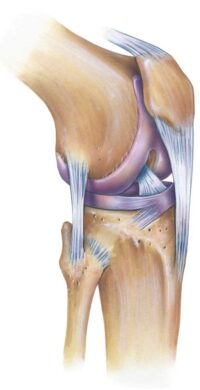PLC Reconstruction Surgeon

Injuries to the PLC can result in pain and instability in the knee. The posterolateral corner (PLC) of the knee is a complex area and requires a surgeon with a specific skill set to reconstruct it properly. Doctor Riley J. Williams has studied the PLC and has the advanced surgical training and experience to perform PLC reconstruction with the best outcomes for his patients in Manhattan, Brooklyn, New York City and surrounding areas who have injured their PLC. For the best diagnosis and specialized surgical treatment plan for your injured knee, contact Dr. Williams’ team today!
What is a posterolateral corner knee injury?
The posterolateral corner of the knee is comprised of three important stabilizing structures: fibular collateral ligament (FCL), popliteus tendon (PLT), and the popliteofibular ligament (PFL). It is common to sustain a PLC injury concomitantly with another knee injury, such as an anterior cruciate ligament (ACL) tear or posterior cruciate ligament (PCL) tear. In most cases, PCL injuries are often severe and traumatic in nature. Posterolateral corner injuries are characterized by looseness of the knee joint on the outer or lateral side. Posterolateral corner injuries are graded from I-III. A Grade III injury describes the complete rupture of all elements of the PLC. The posterolateral corner complex aids in coronal plane (side to side) stabilization of the knee during pivoting activities. A Grade III injury results in significant instability, and typically needs to be addressed surgically by PLC reconstruction.

What is posterolateral corner (PLC) reconstruction?
Posterolateral corner reconstruction is the surgical repair of a significant injury to the posterolateral corner of the knee. PLC tears are most often sustained from an acute injury. For example, a blow to the inner or medial knee while playing football or during a motor vehicle accident can cause a tear of the PLC. Posterolateral corner reconstruction involves the repair of the FCL, PLT, and PFL. Posterolateral corner reconstruction is performed using tissue grafts to replace the injured ligaments. Tissue autografts from the patient (hamstring and quadriceps tendon) or allografts from donors (Achilles tendon, patellar tendon, hamstring tendons) can be used for this reconstruction. Dr. Riley J. Williams, orthopedic knee surgeon, serving Manhattan, Brooklyn, New York City, NY and surrounding areas, has extensive experience in posterolateral corner reconstructions.
How is posterolateral corner reconstruction performed?
PLC reconstruction is performed under regional anesthesia and is an open surgery. An incision on the outer side of the leg and knee is necessary to exposed the injured posterolateral ligament complex. Dr. Williams will inspect all of the injured structures and will repair those ligaments which are suitable for direct repair. The use of medical devices, such as screws, staples, or suture anchors may be used to repair and reconstruct the injured ligaments of the PLC complex. After primary repair of the injured ligament of the PLC, Dr. Williams uses an autograft (tissue from the patient) and/or allograft (donor tissue) to reconstruct the torn ligaments and tendons of the PLC. If another knee injury, such as an ACL or PCL tear, has been sustained with the PLC injury, Dr. Williams will, in most cases, address all repairs at once. The method for PLC reconstruction may depend on whether the injury is chronic or acute.
What are the risks of posterolateral corner reconstruction?
Although rare, all surgical procedures carry the risk of infection, bleeding, and blood clotting. Prophylactic antibiotics are administered before the procedure begins to help prevent infection. It is important to keep the incision site clean after the operation. Numbness, over the incision site is possible, and is usually temporary. Persistent knee pain and limited range of motion can occur in those patients who do not actively participate in the rehabilitation process. It is important to follow Dr. Williams’ post-operative protocol to ensure proper healing.
How long does it take to recover from posterolateral corner reconstruction?
Individuals who have undergone PLC reconstruction can expect to use crutches for 2-3 weeks and wear a knee brace for up to six weeks. Toe-touch weight bearing during first two weeks after surgery allows the PLC to start healing before patients are advanced to full weight bearing activities. Patients are allowed to achieve range of motion up to 100 degrees of flexion during the first two weeks; range of motion is then progressed on an unlimited basis thereafter. Physical therapy is necessary to rebuild strength, range of motion, coordination, and proprioception. A return to normal activities of daily living is expected between 6-8 weeks after surgery; a return to sports is possible approximately six months after PLC reconstruction.
For additional resources on posterolateral corner reconstruction or to have your knee pain evaluated, please contact the office of Dr. Riley J. Williams, orthopedic knee surgeon serving Manhattan, Brooklyn, New York City, NY and surrounding areas.